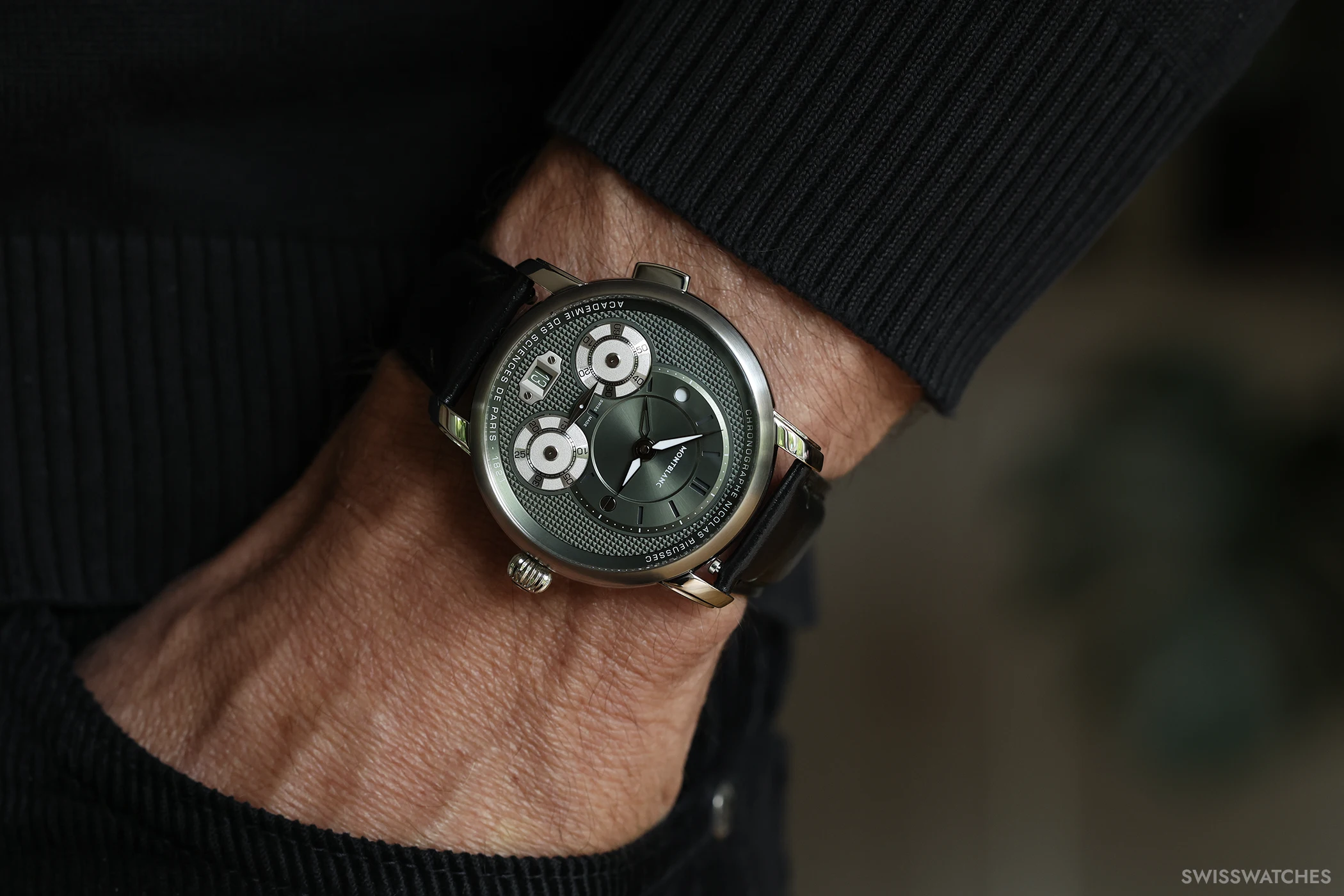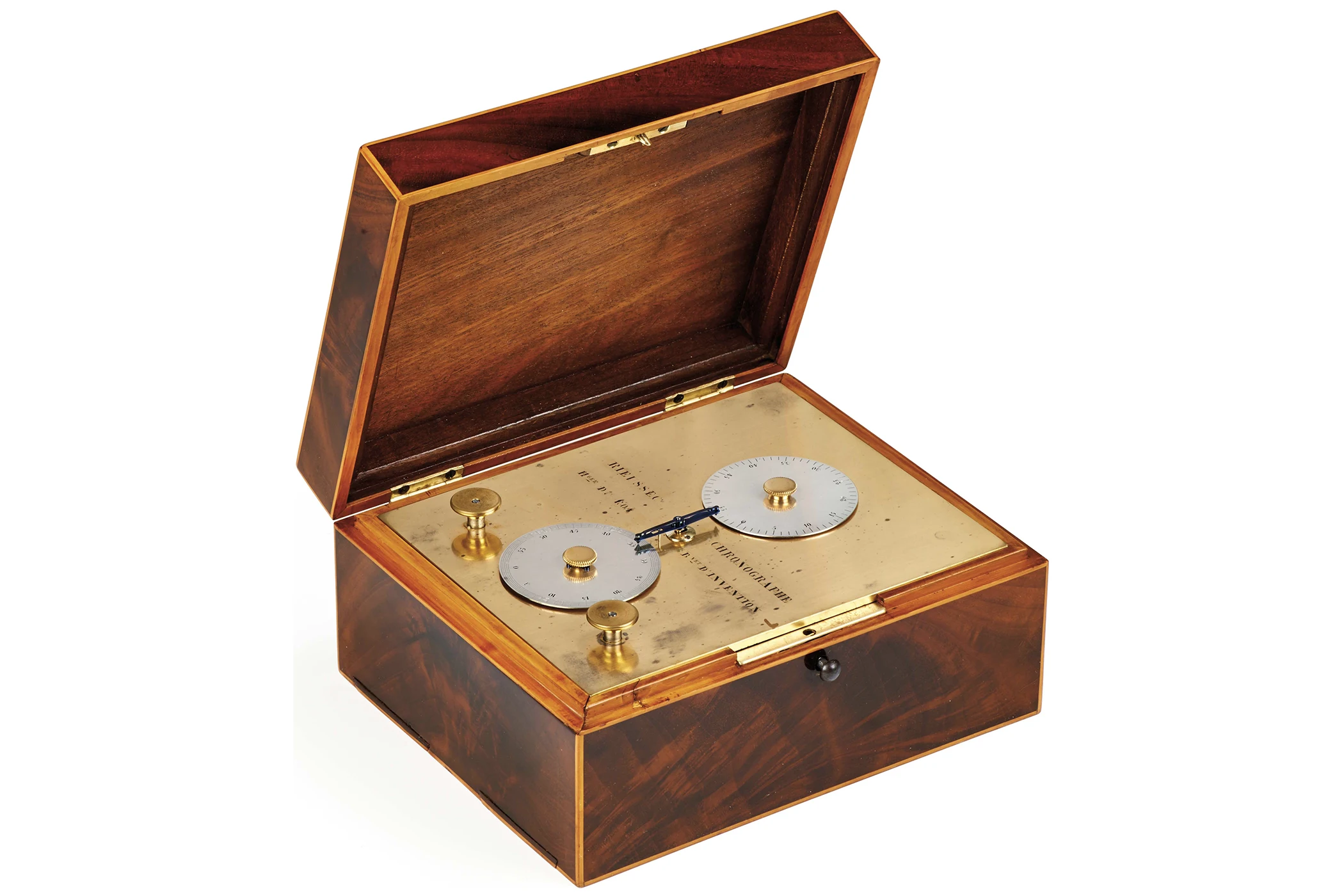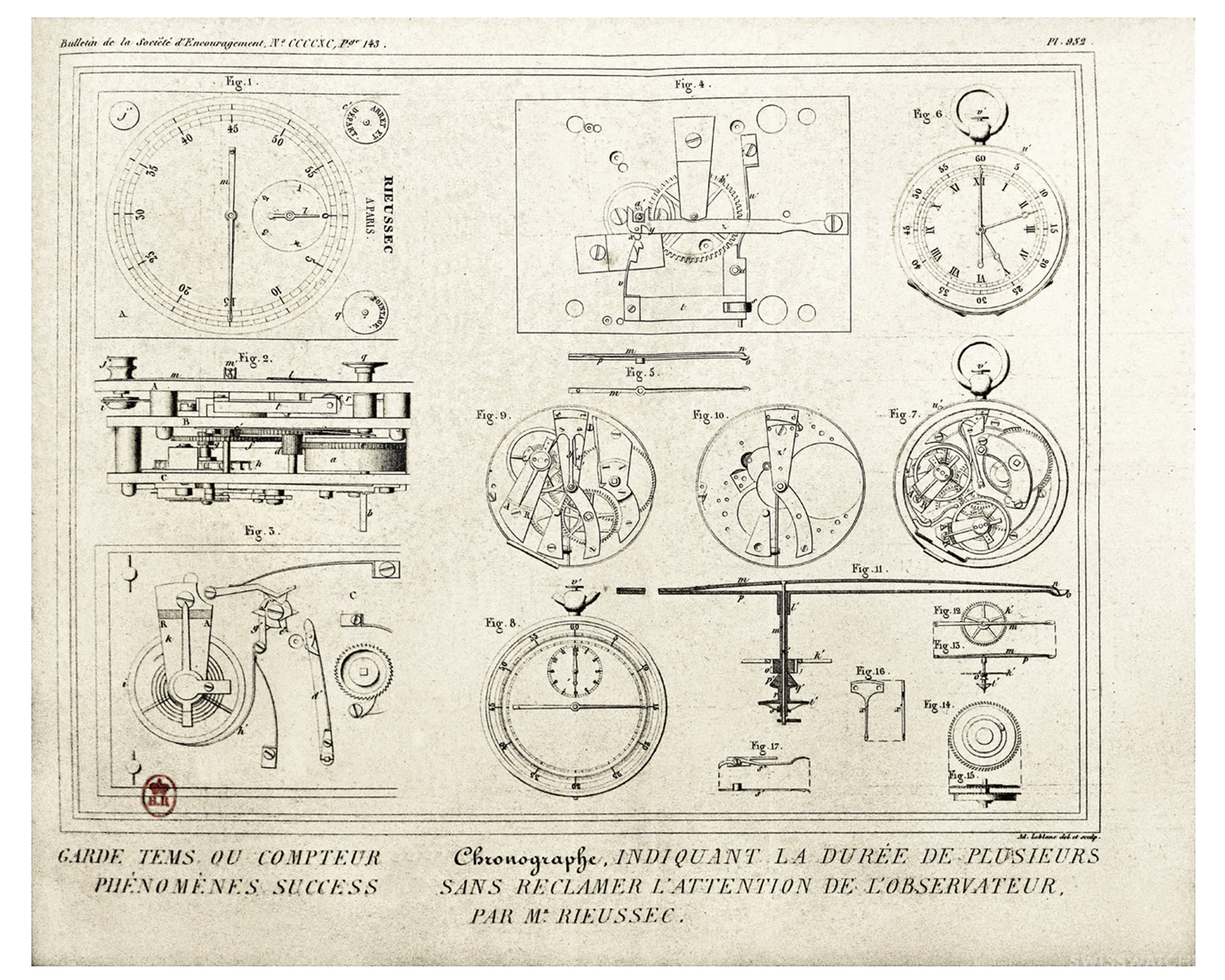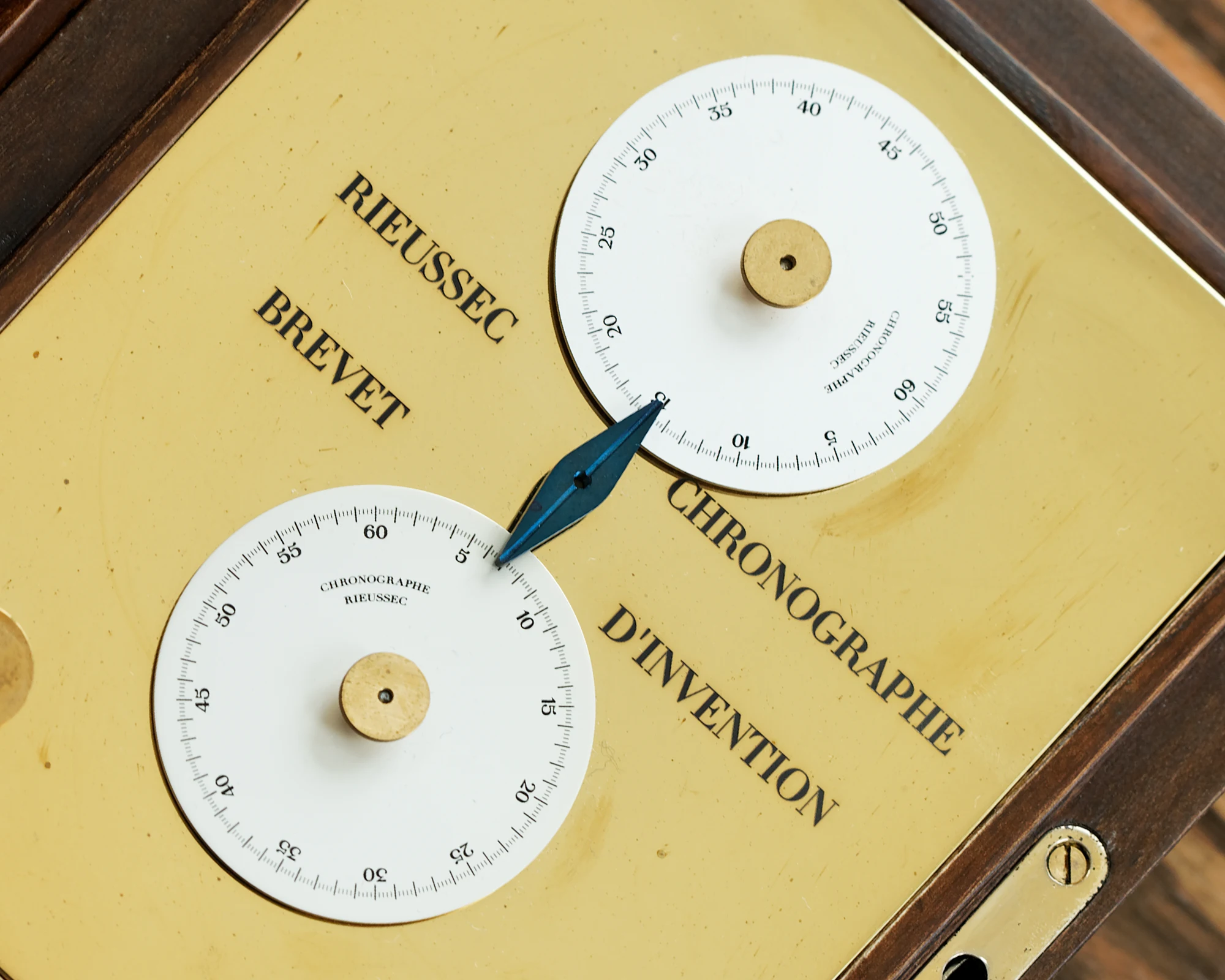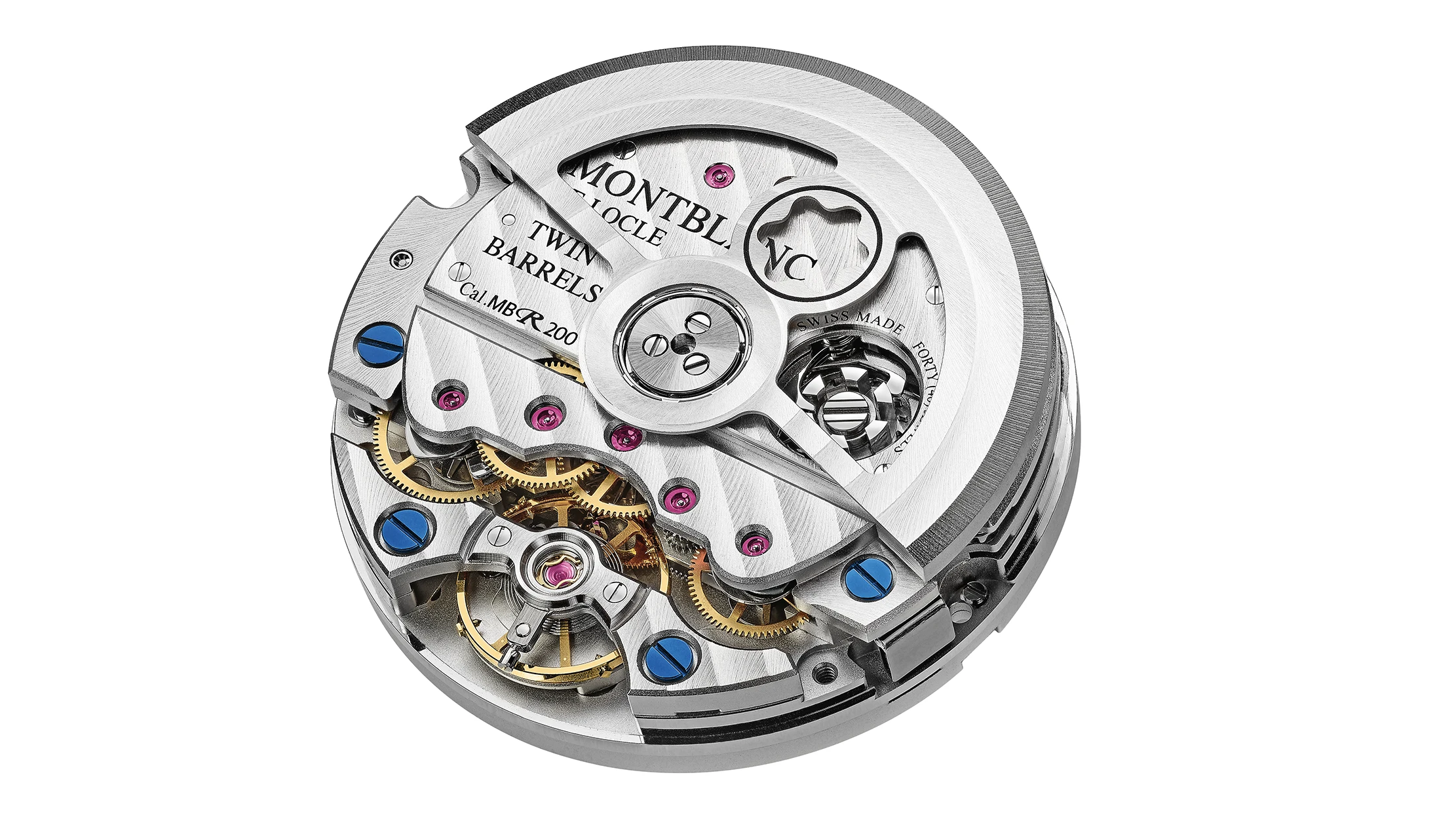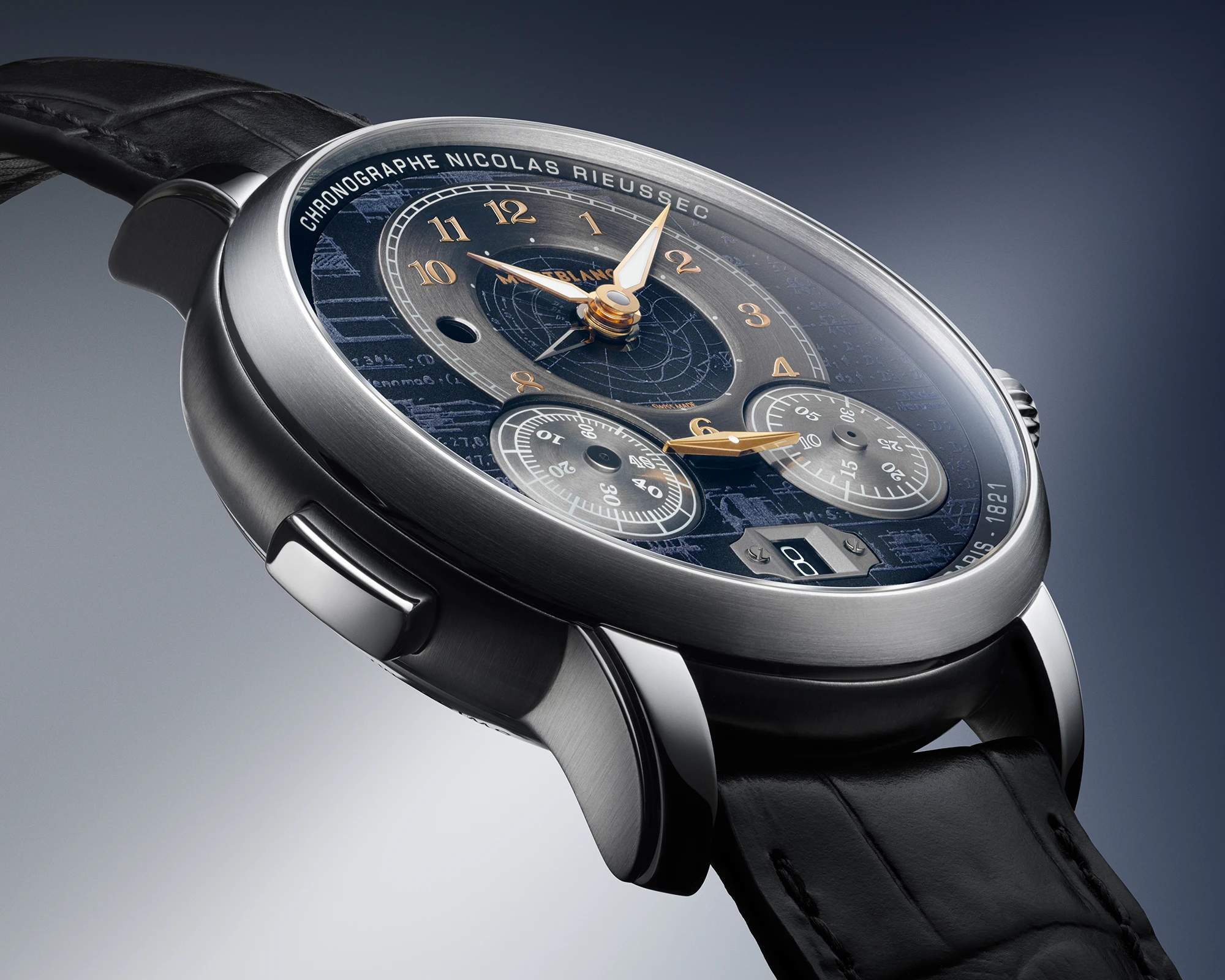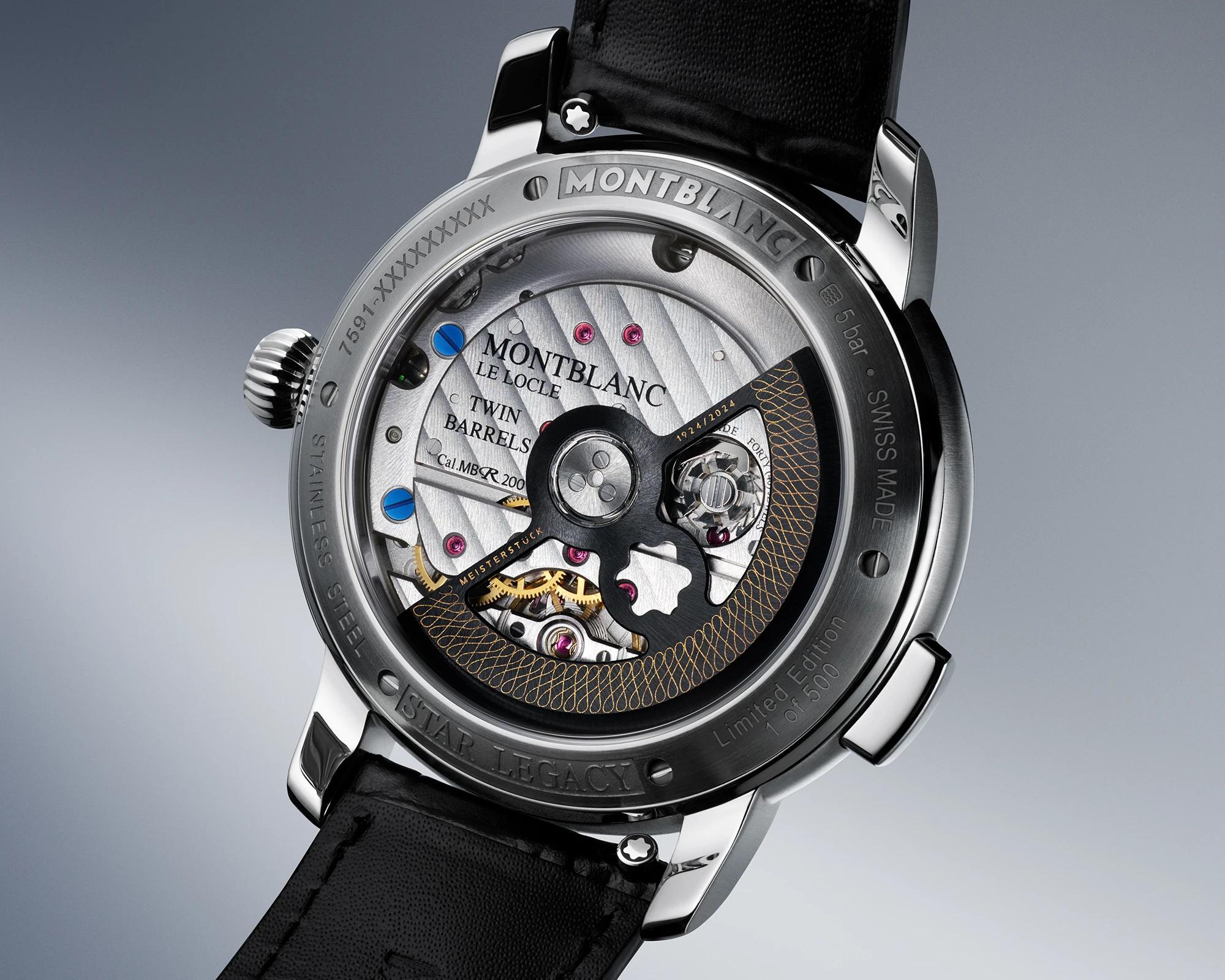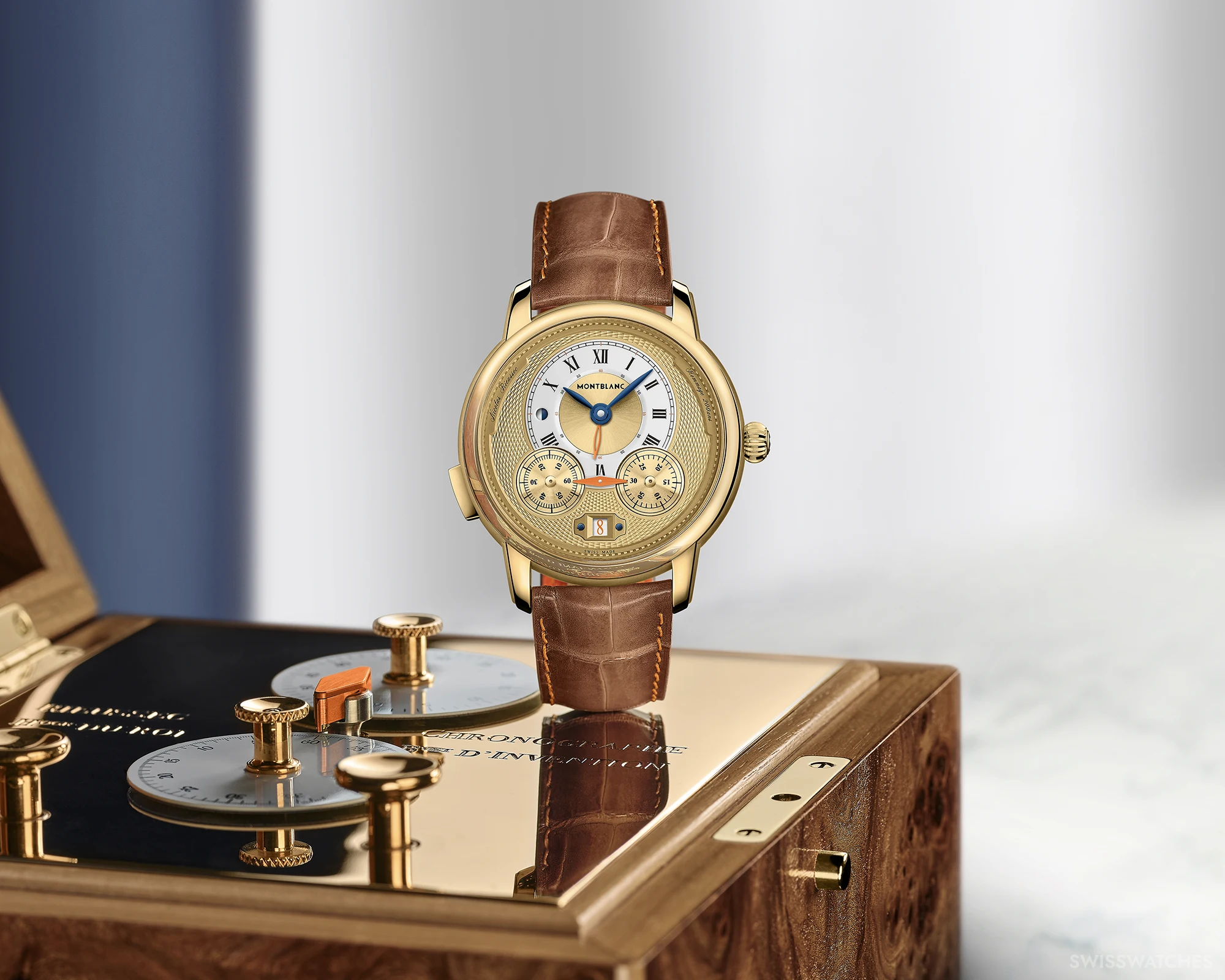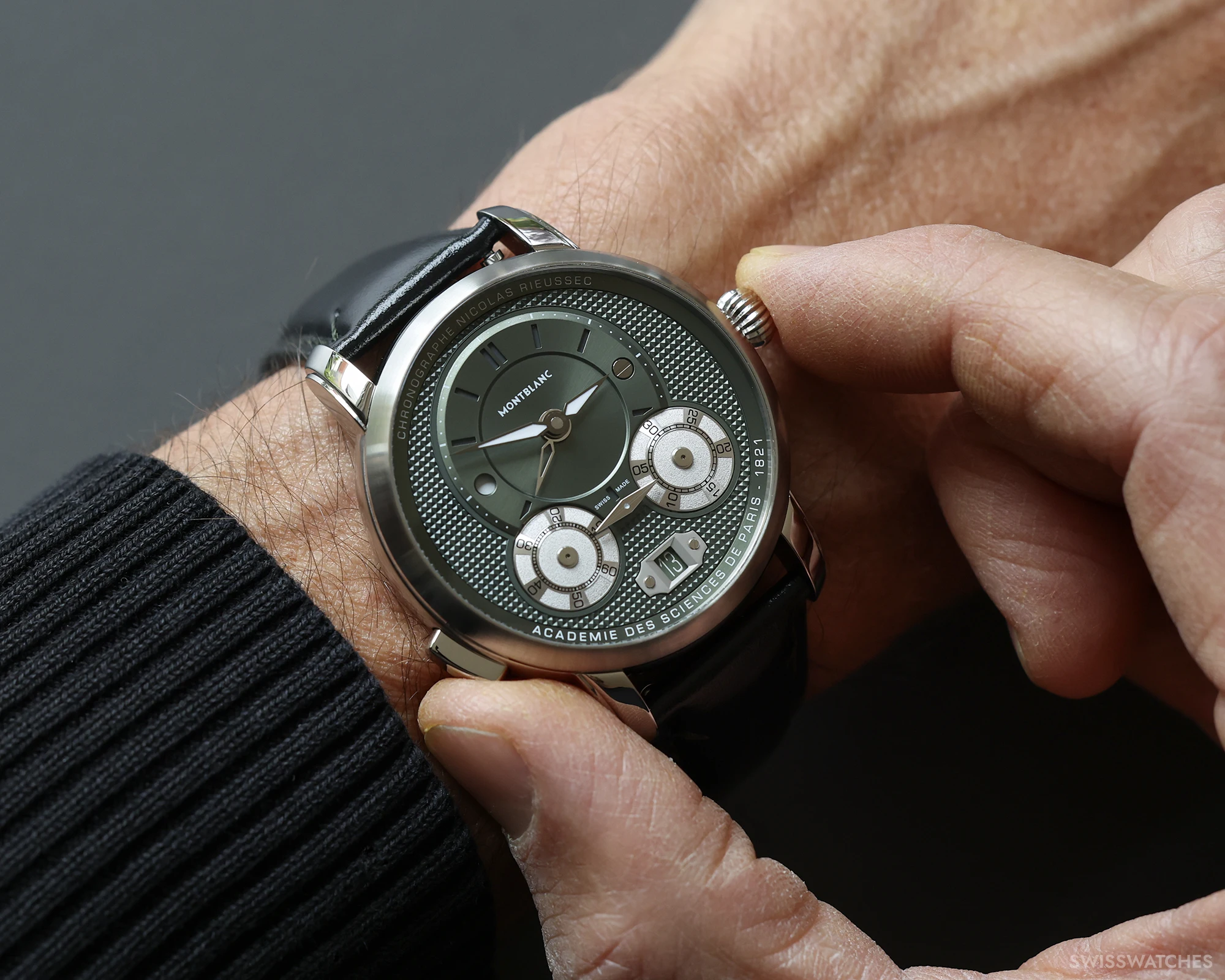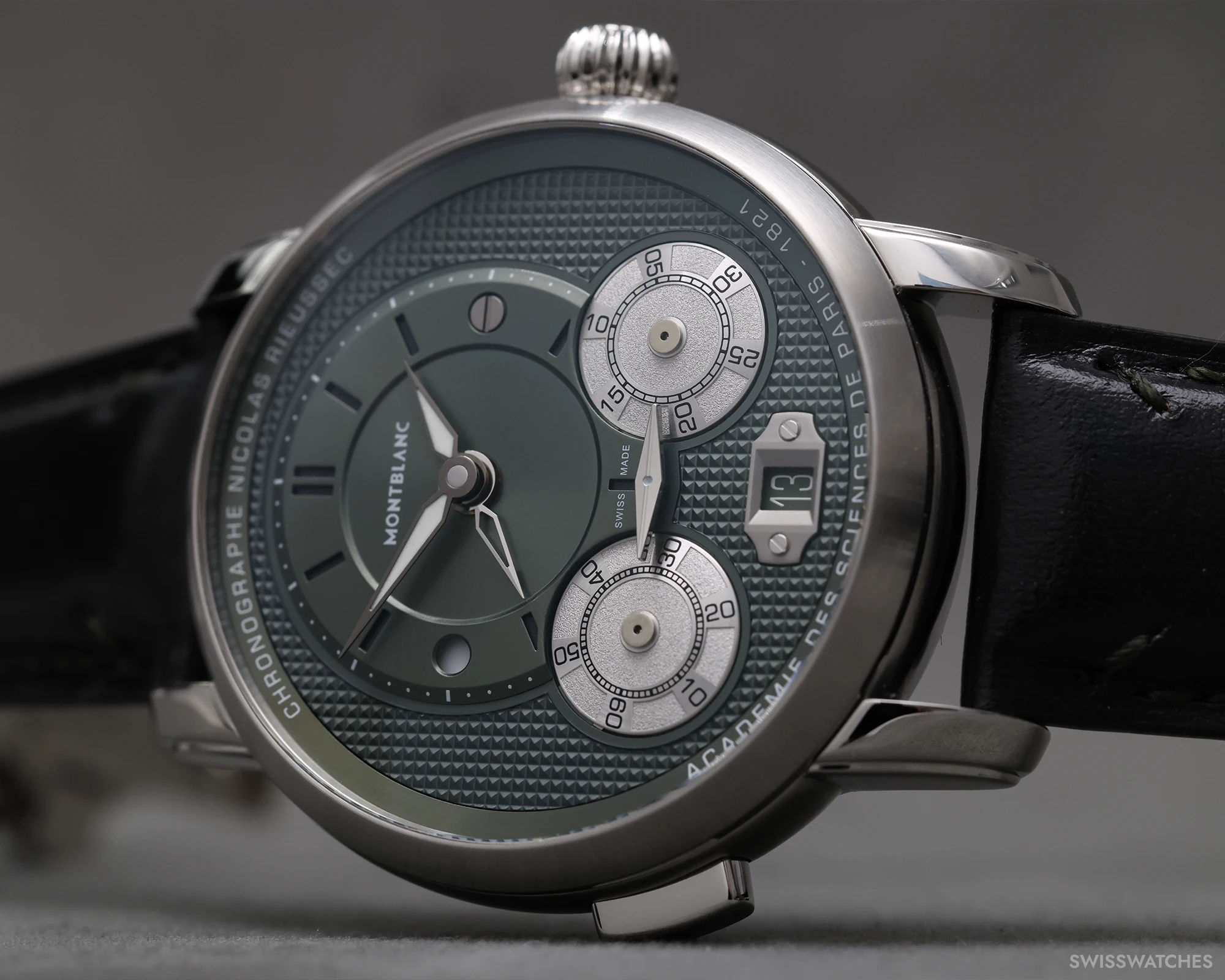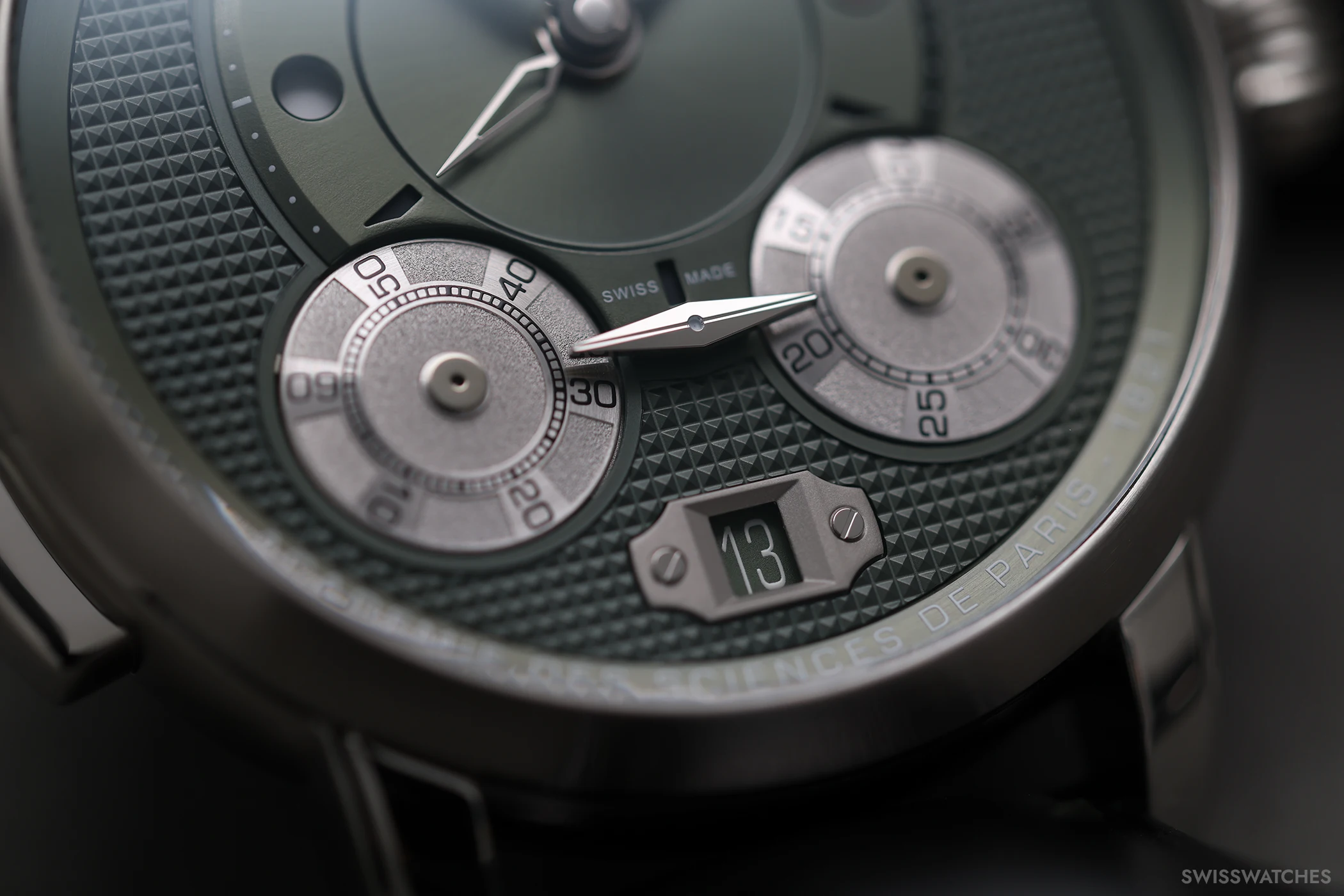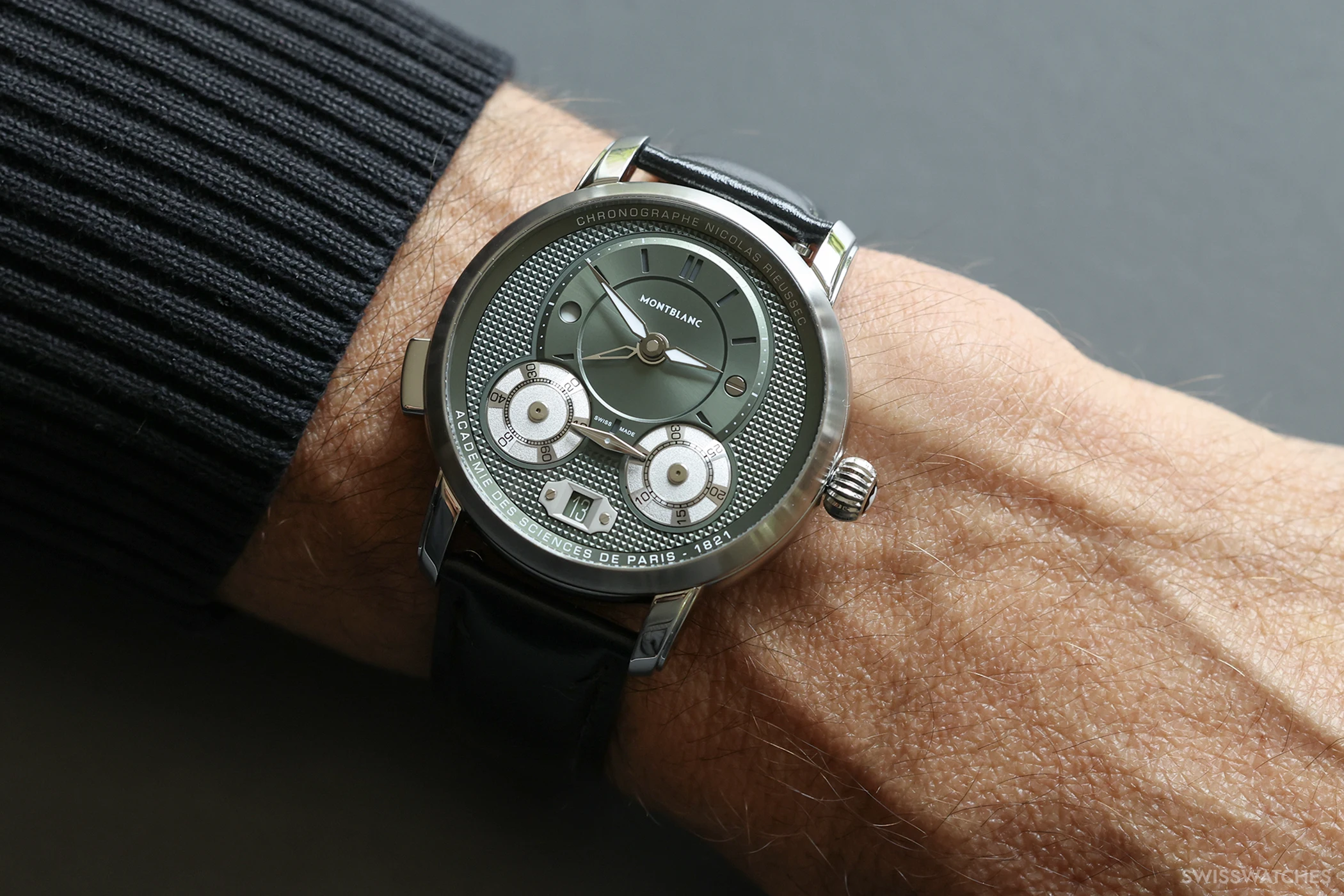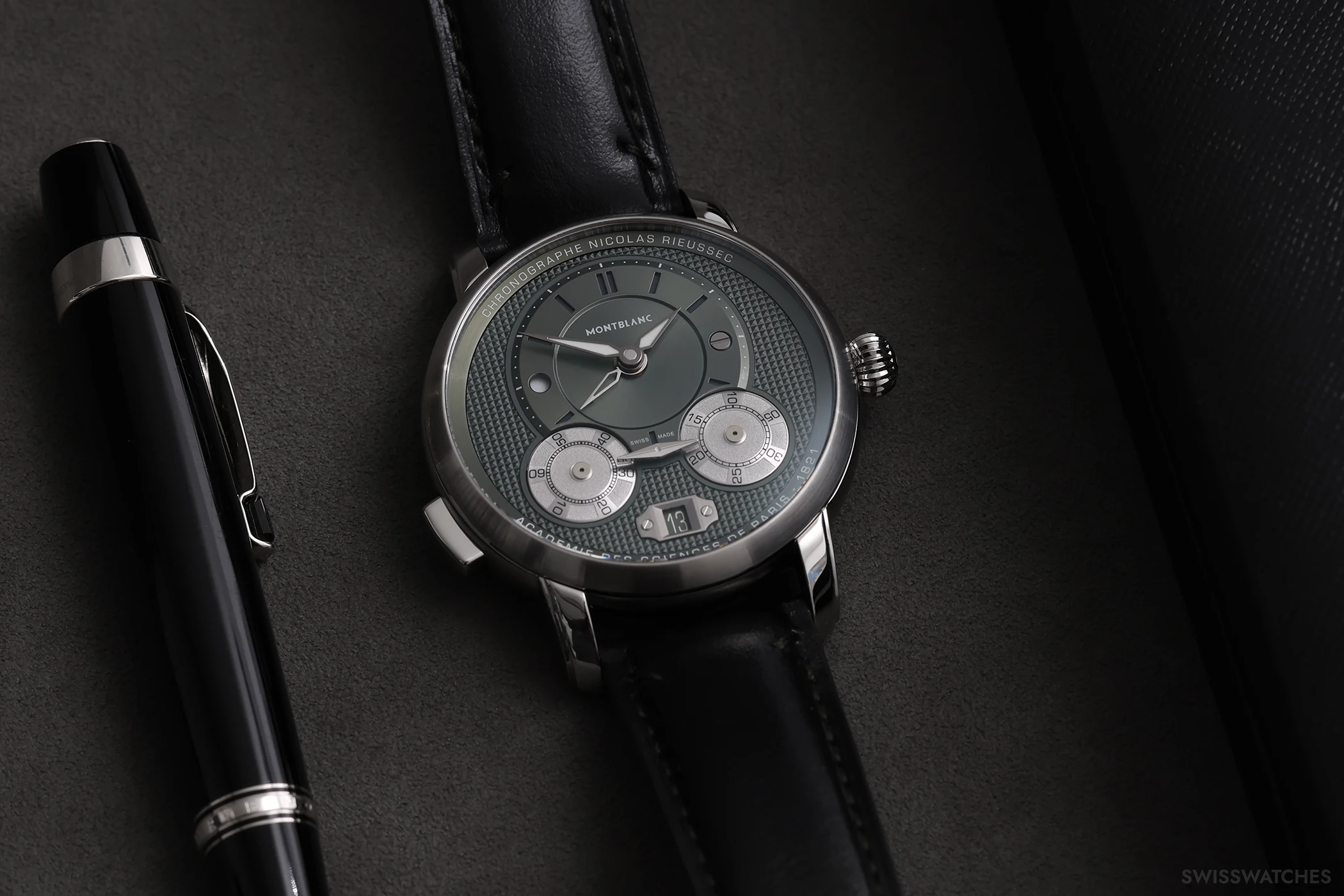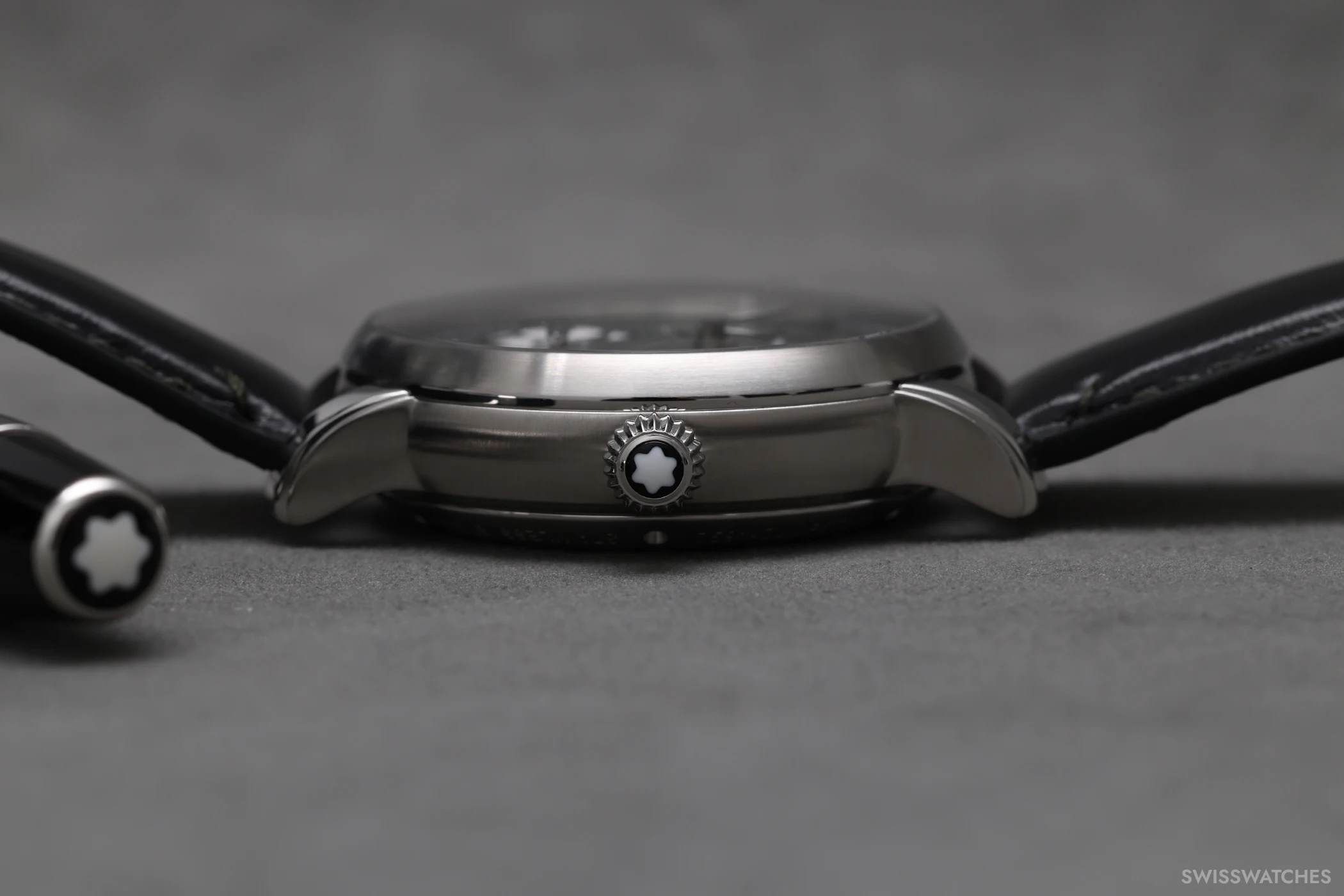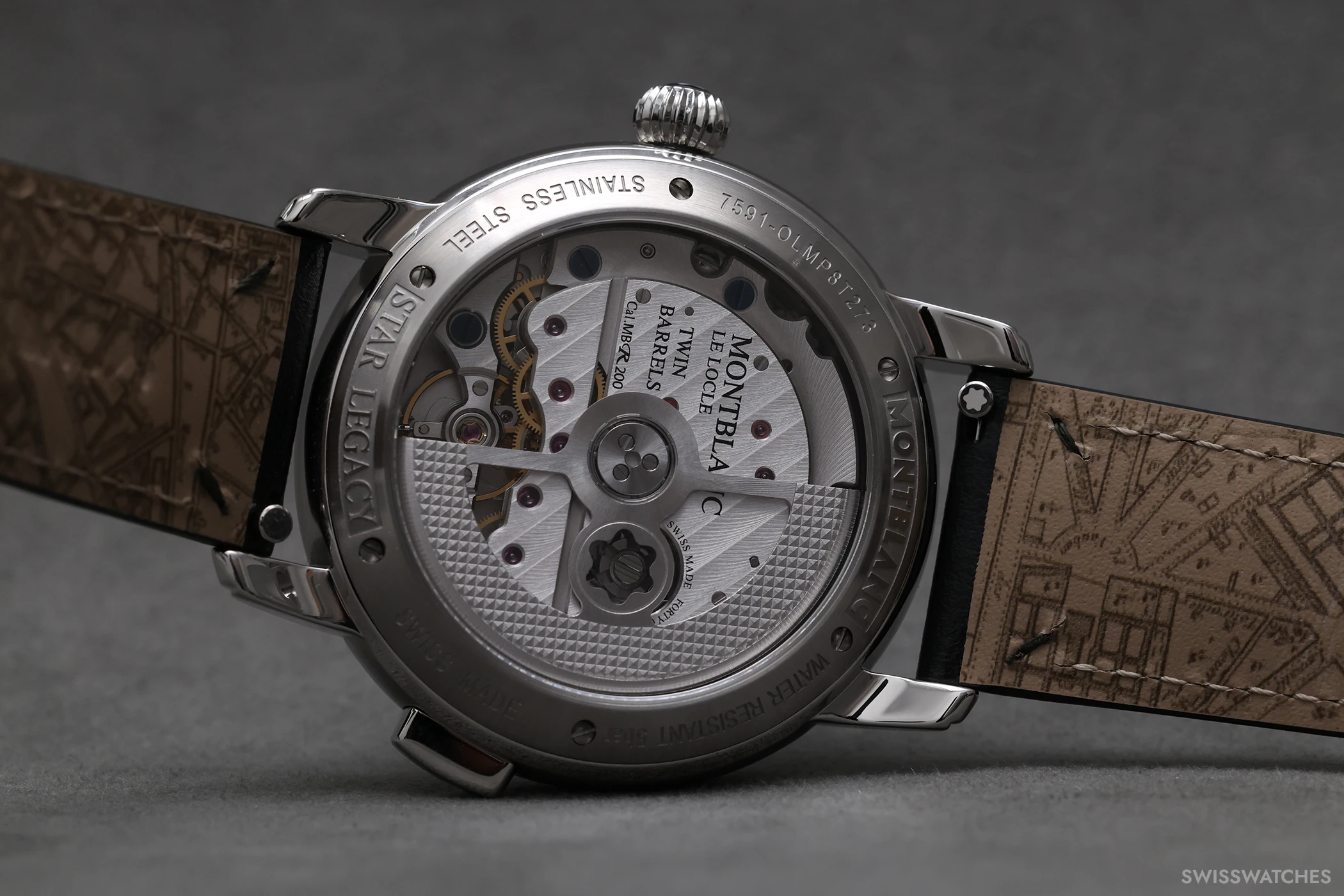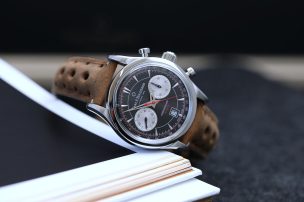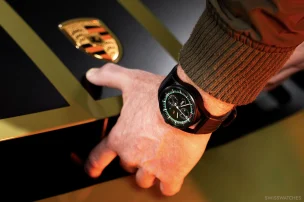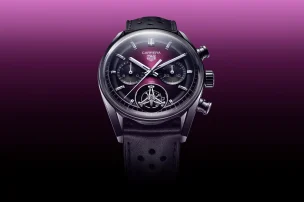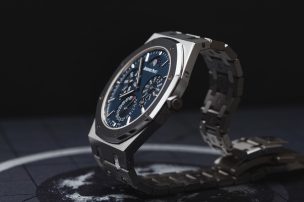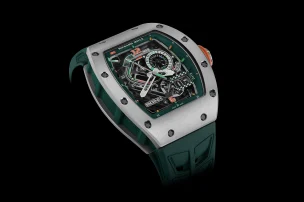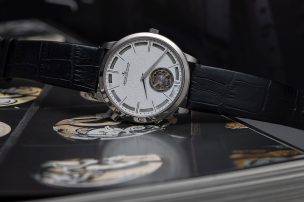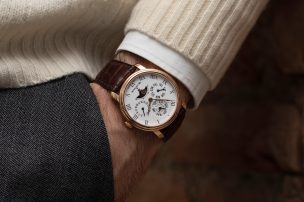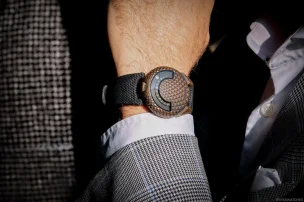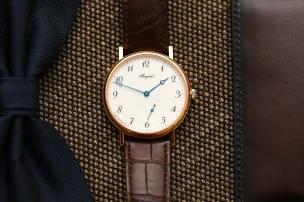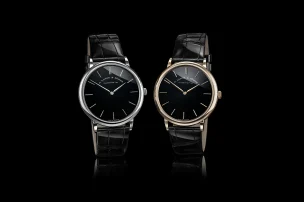
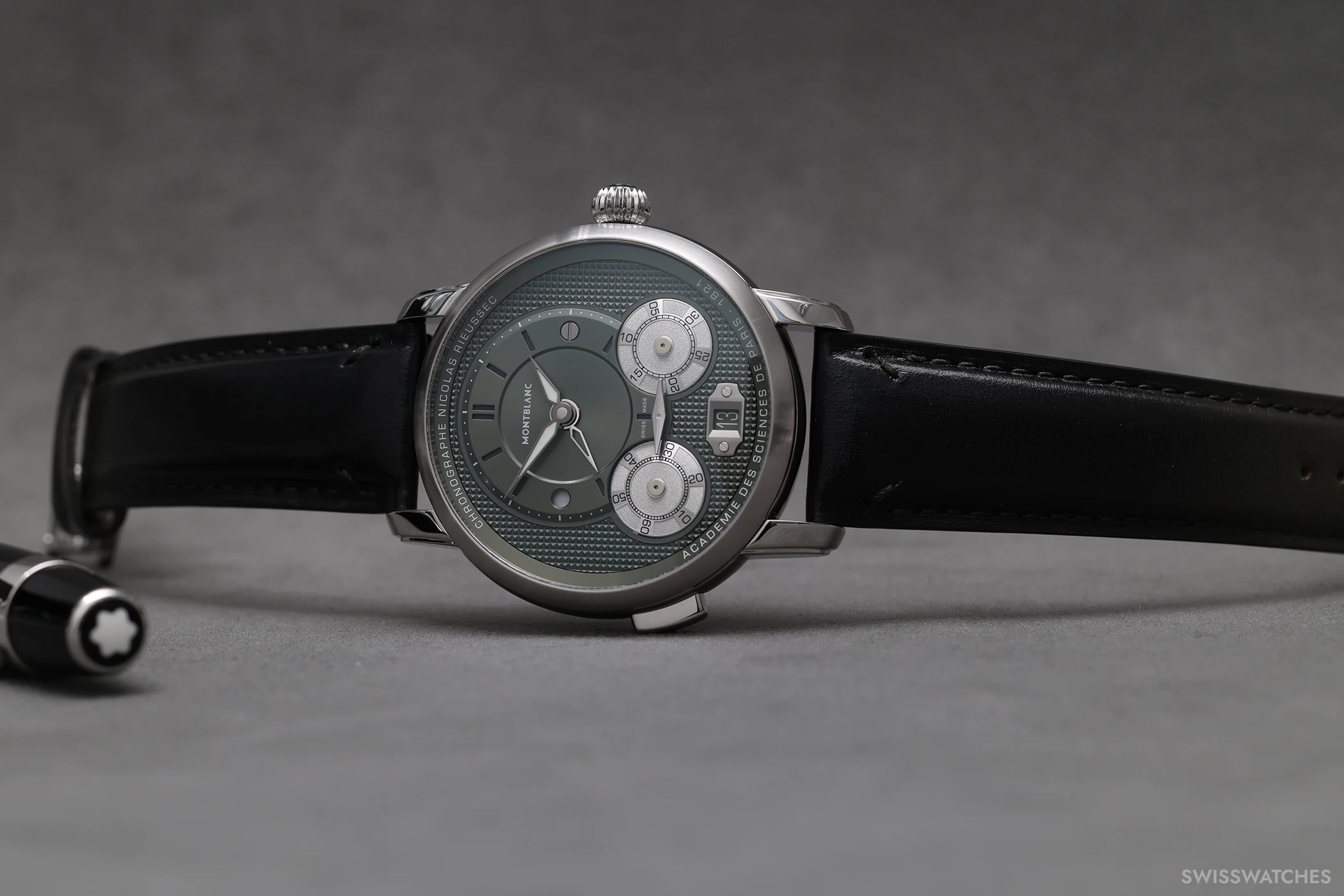
A New Look for the Montblanc Star Legacy Nicolas Rieussec Chronograph
Touches of green on the dial and strap lend the new chronograph a contemporary flair. At the same time, the manufacture pays tribute to one of the greatest watchmakers of a bygone century with this ‘time writer’.
Today, chronographs adorn countless wrists. The stopwatch function is among the most popular complications in wristwatches. Yet few wearers are likely to have given much thought to the origins and meaning of the term ‘chronograph’.
A brief excursion into the etymology and history of the chronograph
The word chronograph derives from Ancient Greek and literally means ‘time writer’: from chronos (time) and graphein (to write, to record). The first devices of this kind, however, had little in common with our modern stopwatches. Activated at the outset of an event and stopped at its finish, they permit the elapsed time to be easily read off the dial.
As early as 1776, the Geneva-based watchmaker Jean Moïse Pouzait designed a precursor to today’s chronographs. In his construction, the seconds hand was driven by a separate barrel and could be stopped independently. However, stopping the second hand also stopped the actual movement, and it was not possible to reset it to zero. At the time, the term ‘chronograph’ had not yet come into use.
This also applies to Louis Moinet’s astronomical timepiece of 1816, which is regarded as the very first chronograph – in other words, a stopwatch – although it was given the name compteur de tierces (third-counter). A central hand displayed sixtieths of a second. The watch was also equipped with pushers for start, stop, and reset functions, as well as separate indications for minutes, hours, and 24 hours.
Previously, Belgian watchmaker Hubert Sarton (1748–1828) had presented a ‘time-measuring watch’ that can also be considered a forerunner to the modern chronograph. Watchmaker and inventor John Arnold (1736–1799) also designed various options for displaying sixtieths of a second.
1821: The chronograph era begins with Nicolas Mathieu Rieussec
The term ‘chronograph’, which is common today, was coined by the French court watchmaker Nicolas Mathieu Rieussec (1781–1866). His invention consisted of two rotating discs with a hand equipped with a small ink reservoir. The ink marks left on the discs indicated the measured time intervals. Since the balance frequency was 18,000 vibrations per hour, this ink chronograph enabled measurements accurate to one-fifth of a second.
Successfully tested at a horse race in Paris on 1 September 1821, where his device recorded the times of all horses crossing the finish line, Rieussec’s ‘time writer’ was officially recognised as a so-called second chronograph by the Royal Academy of Sciences on 15 October 1821.
Hommage to the ink chronograph
The story of Nicolas Rieussec’s ink chronograph is a perfect fit for Montblanc, whose roots lie in the world of fine writing instruments such as fountain pens – which, of course, are filled with ink. It was not until 1997 that timepieces were added to the brand’s portfolio.
Star Legacy Nicolas Rieussec Chronograph
Montblanc’s tribute in the form of a modern chronograph is therefore only fitting. The company conceived the Star Legacy Nicolas Rieussec collection and unveiled it to the public for the first time in 2007.
That was not all. As a mark of high esteem, the timepiece was equipped with the brand’s very first in-house movement, the MB R200 with monopusher mechanism. Since then, several editions of this ticking tribute have been released, including a version limited to 500 pieces with black DLC coating.
Among the most recent highlights of the Star Legacy Nicolas Rieussec collection is undoubtedly last year’s anniversary model. The Star Legacy Nicolas Rieussec Chronograph Meisterstück 100 Years was launched to celebrate the centenary of the Meisterstück writing instrument, which has become virtually synonymous with Montblanc. Its cigar-shaped design and three golden rings unmistakably reference the world-famous pen, while a luminous blue technical drawing of it adorns the ink-black dial. Speaking of ink: the oscillating weight of the automatic in-house calibre MB R200 – the very same movement introduced in 2007 – is decorated with a calligraphic motif of golden figure-of-eight loops.
At the same time, the watch pays homage to its namesake and his achievement in the field of modern time measurement. Beneath the hour circle sit two domed discs which begin to rotate once the chronograph function is activated. The 60-second counter on the left and the 30-minute counter on the right are linked by a rose-gold plated bridge which simultaneously serves as the chronograph hand: Nicolas Rieussec’s ink chronograph in wristwatch-sized miniature form. The entire dial is framed by the inscriptions ‘Chronographe Nicolas Rieussec’ at 12 o’clock and ‘Académie des Sciences de Paris – 1821’ at 6 o’clock.
The Star Legacy Nicolas Rieussec Chronograph Only Watch 21, which Montblanc created as a one-off piece for the Only Watch charity auction in 2021, is unique in the truest sense of the word. The estimated price at the time was between CHF 30,000 and CHF 45,000. The hammer fell at CHF 75,000.
This one-of-a-kind model is the only Star Legacy Nicolas Rieussec chronograph with a yellow gold case and matching oscillating weight, and was auctioned together with a wooden replica of the historic ink chronograph from 1821.
Functional elegance in green: the new Star Legacy Nicolas Rieussec Chronograph
For its latest edition, Montblanc has chosen a stainless steel case measuring 43 millimetres, water-resistant to five bar, and the colour green. The latter graces the dial, which features the horizontally aligned, rotating chronograph counters that have become a hallmark of the line.
This dial also serves as a canvas for the engraving ‘Académie des Sciences de Paris’ along its perimeter. It serves as a reminder of the Academy’s official recognition of Rieussec’s invention in 1821 played a decisive role in establishing the chronograph as we know it today. Naturally, the name of the watchmaker himself is also engraved at 12 o’clock.
Other defining details of the Star Legacy Nicolas Rieussec Chronograph include functional elements such as the day/night indicator at 9 o’clock, Dauphine hands coated with Super-LumiNova, a skeletonised hand for the second time zone, baton indices, and silvered counters that create a refined contrast against the green dial. The interchangeable calfskin strap with a vertical sfumato finish also matches the green colour scheme.
Decoration: a tribute to Paris
Montblanc left nothing to chance in the design of this timepiece. The pointed shape of the bracelet is reminiscent of Montblanc’s writing instrument nibs. The underside of the strap is also adorned with a map of Paris from around 1821. Those familiar with the city will recognise the Île de la Cité, where Rieussec had his workshop, and the Champ-de-Mars racecourse, where his ink chronograph was first used.
Paris, the birthplace of the first official chronograph, is a recurring design theme throughout the watch. The clous de Paris motif on the dial recalls the cobblestones of the French capital, a detail repeated on the oscillating weight of the in-house MB R200 calibre.
Movement: in-house monopusher
The Star Legacy Nicolas Rieussec Chronograph is a so-called monopusher chronograph. Its distinguishing feature is that the start, stop, and reset functions are all controlled via a single pusher, positioned at 8 o’clock for easy thumb operation. This solution lends the watch a far more elegant profile than traditional chronographs, which are typically fitted with two pushers.
At its heart is Montblanc’s very first in-house movement: the 319-component MB R200, launched in 2007. While the monopusher mechanism is controlled by a column wheel, a vertical disc clutch between the gear train and the chronograph wheels prevents the discs for the elapsed time from jumping when the chronograph is activated.
Practicality is enhanced by the quick-reset mechanism for both the hour and the date, which can be adjusted forwards or backwards without affecting the minute hand. Additional features include a second time zone and an ample 72-hour power reserve. The MB R200 is visible through the sapphire crystal caseback.
